MN-Clearwater is the first food-grade wheatgrass and is already being used in some food and drink products
Farmers in Minnesota are growing some of the first intermediate wheatgrass developed specifically for human consumption. Plant scientists are calling the food grade MN-Clearwater “a superfood with environmental and health benefits.” Wheatgrass has traditionally been used to feed cattle. However, the potential to unleash locked-in nutrition prompted University of Minnesota researchers to embark on a […] Read moreStories by Ron Lyseng

Fieldbot is really quite bossy
One field robot runs the show and tells other robots what to do, system manages not just monitors events
Fieldbot is no ordinary ag sensor. It issues orders, turns irrigation pumps on and off, controls fans and feeding equipment in livestock operations, even sends dairy cows into the parlour. Fieldbot can serve as a producer’s eyes and ears, while they’re busy carrying on with the actual work of farming. It will count cattle moving […] Read more
New technology in high output compost spreaders
The trend toward surface-applied granular fertilizer is prompting manufacturers to develop new spreaders, such as the New Leader compost spreader, which debuted at Ag in Motion Discovery on July 21. The spreader is a new design, with only a handful of units sold in the United States so far, and none in Canada. Ag in […] Read more

Going wider and single choices grow
John Deere recently announced Goodyear Super Single low side wall (LSW) tires can be factory installed on the three largest 8R-Series MFWD tractors: 8R 340; 8R 370; 8R 410. The combination of Goodyear Optitrac LSW1000/40R32 fronts and LSW1100/45R46 rears offers significant traction, flotation and ride quality benefits over the traditional row crop setup with duals. […] Read more

COVID-19 and the weather forecaster
COVID-19 is having a significantly negative impact on weather forecasts around the globe. The pronouncement comes from new research published this month in the peer-reviewed American Geosciences Union Journal. The study finds the world lost up to 75 percent of its aircraft weather observations between March and May because the pandemic grounded flights. Commercial aircraft […] Read more
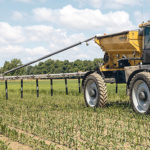
Simultaneous 150 lb. urea with 20 lb. cover crop seed
New granular/seed tubes for RoGator put the right products in the right places, between the rows, not on them
Farmers can now apply 150 pounds per acre urea while simultaneously applying 20 pounds per acre cover crop seed through new drop tubes retrofitted to a RoGator AirMax Precision R1/R2. The new drop tube kit is designed for between-row application of in-season dry granular fertilizer and precisely seeding cover crops into standing row crops, says […] Read more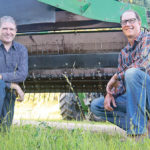
Aerow aerates and fluffs windrows
Swathing isn’t the preferred method of drying down a crop. But if desiccants disappear, swathing may again become the norm, prompting a flurry of development in swather technology. Aerow is attempting to stay one step ahead of that flurry. The name Aerow comprises two base words — “aerate” and “row”. And that’s exactly what Aerow […] Read more
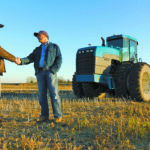
COVID-19 forces farmers to go digital
COVID-19 has interrupted the face-to-face contact farmers traditionally enjoyed with their agronomists, suppliers and equipment dealers. Although not as efficient, all parties have come to rely on digital communications daily. Five months ago, communications tools such as live chat and video conferencing for the farm would have been considered silly by most. Not so silly […] Read more
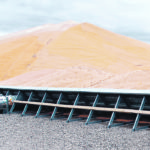
Portable grain storage circle simplified
Low oil prices decimated demand for ethanol grains. COVID-19 decimated demand for livestock feed grains. That means if the 2020 crop is near average, it could spark big demand for temporary grain storage. Nobody likes to invest in temporary shortage, but it’s one of those things you can’t do without, like a tractor. With that […] Read more
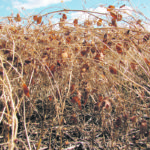
Desiccants still on the table — for now
Rules are not relaxed just because you’ve given an old product a new task, ensuring the crop is right for harvest
The use of desiccants in pulse harvest is coming under increased scrutiny, as are chemicals used to create uniform pre-mature dry-down. But for now, desiccants are still on the table. Keep in mind that a desiccant is nothing more than a herbicide with a different job. In addition to the unique role you are now […] Read more




